Mangrove forests, also known as mangrove swamps or mangals, are an invaluable ecosystem that thrives in the intertidal zone. These unique forests, found in tropical and subtropical latitudes, are home to approximately 80 different species of mangrove trees. With their remarkable ecological functions, mangrove forests play a critical role in stabilizing coastlines, supporting marine life, and regulating climate change.
Within the intertidal zone, mangrove forests offer a remarkable range of benefits. The dense tangle of prop roots found in these forests helps to reduce erosion caused by storm surges, currents, waves, and tides, thus stabilizing coastlines and protecting coastal areas from the impacts of erosion and tsunamis. Additionally, the intricate root system provides shelter and sustenance for a diverse array of marine organisms, making mangroves invaluable habitats within coastal ecosystems.
Key Takeaways:
- Mangrove forests thrive in the intertidal zone and consist of around 80 species of mangrove trees.
- They play a crucial role in stabilizing coastlines and protecting coastal areas from erosion and storm surge.
- Mangroves provide habitats for a wide variety of marine organisms, contributing to biodiversity and ecosystem health.
- These forests also store significant amounts of carbon, making them important in climate regulation.
- Mangroves face threats such as deforestation, pollution, and climate change, highlighting the need for conservation and sustainable management.
The Role of Mangrove Forests in Coastal Habitats
Mangrove forests play a vital role in coastal habitats, providing essential ecosystem services and contributing to the stability and resilience of coastlines. These unique forests have evolved to withstand the challenging conditions of the intertidal zone, where they thrive between land and sea.
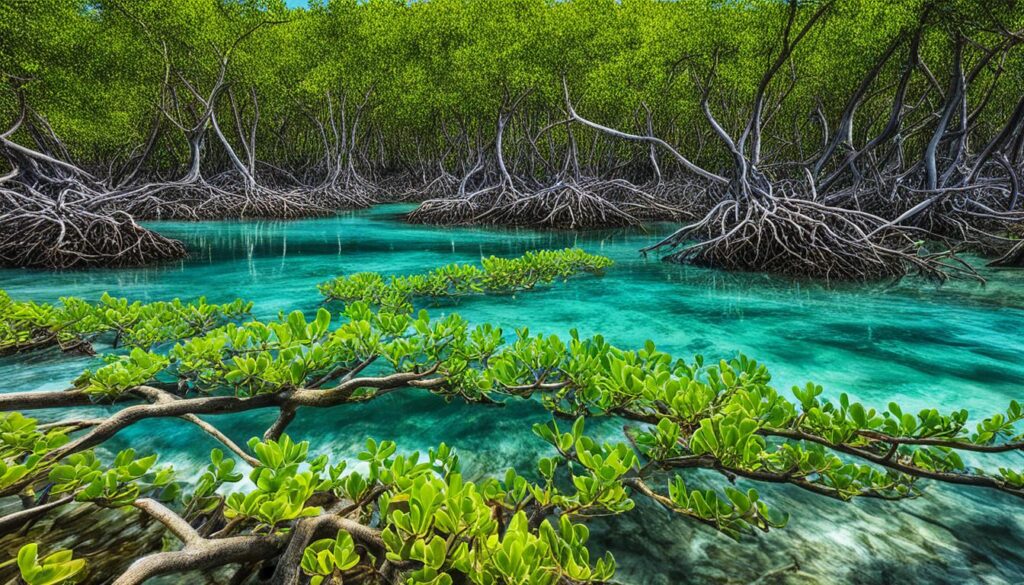
Their intricate root systems, consisting of dense tangles of prop roots, are key to their remarkable ability to stabilize coastlines. These prop roots slow down tidal waters, allowing sediments to settle and build up the muddy bottom. This sedimentation process is crucial in reducing erosion caused by storm surges, currents, waves, and tides.
By trapping sediments, mangrove forests create a natural barrier that protects coastal areas from erosion, storm surge, and even tsunamis. They act as a living buffer, absorbing the energy of waves and providing a sheltered environment for coastal communities and valuable infrastructure.
Moreover, the unique structure of mangrove forests creates a complex and diverse habitat for marine organisms. The prop roots and the intertwining branches of mangroves provide shelter, breeding grounds, and nurseries for a wide variety of fish, mollusks, crustaceans, and other marine organisms. These organisms, in turn, attract larger predators, supporting a diverse ecosystem and contributing to overall biodiversity.
The dense tangle of prop roots in mangrove forests slows down tidal waters, causing sediments to settle and build up the muddy bottom.
Mangrove forests also have the ability to store significant amounts of carbon, making them valuable allies in the fight against climate change. The plants absorb carbon dioxide and store it in their leaves, stems, and roots. Additionally, the sediments in mangrove forests are rich in organic matter and serve as long-term storage for carbon. This carbon sequestration helps reduce the concentration of greenhouse gases in the atmosphere and mitigate climate change.
Coastal habitats are not only home to mangroves but also to a wide range of other species. The protection and conservation of mangrove forests are crucial for the overall health and resilience of coastal ecosystems. They provide habitats, food sources, and breeding grounds for countless organisms, ensuring the stability and productivity of these delicate ecosystems.
Mangrove forests are truly nature’s engineers, playing a vital role in coastline stabilization, erosion reduction, and the preservation of coastal habitats. Their remarkable adaptations and ecological functions make them a cornerstone of the intertidal zone, providing valuable services to both the marine life and coastal communities that depend on them.
Mangrove Forests as Productive Wetlands
Mangrove forests are not only visually stunning ecosystems but also serve as highly productive wetlands that play a crucial role in the flow of energy and matter between the land, ocean, and atmosphere. These unique habitats provide a multitude of ecological functions that contribute to the overall health and balance of coastal environments.
Nutrient Storage and Recycling
One of the key functions of mangrove forests is their ability to store and recycle nutrients. As leaves and other organic matter fall into the water, they become a rich source of nutrients that are absorbed by the surrounding plants. The intricate root systems of mangroves act as filters, trapping sediments and organic matter, which further enriches the soil and supports the growth of other organisms.
Runoff and Flood Prevention
Mangrove forests effectively prevent runoff and flooding by acting as a natural barrier against excessive water flow. The dense root systems and thick vegetation help to slow down the movement of water, reducing the risk of erosion and controlling the flow of sediments. During heavy rainfall or storms, mangroves absorb and store large amounts of water, acting as a sponge and reducing the impact of flooding on coastal areas.
Energy Conversion
Mangrove forests also contribute to the conversion of energy within the ecosystem. The dense vegetation, along with the processes of photosynthesis and decomposition, facilitate the transfer of solar energy into organic matter. This energy is then transferred to other organisms through various food chains and webs, supporting a diverse range of wildlife in mangrove ecosystems.
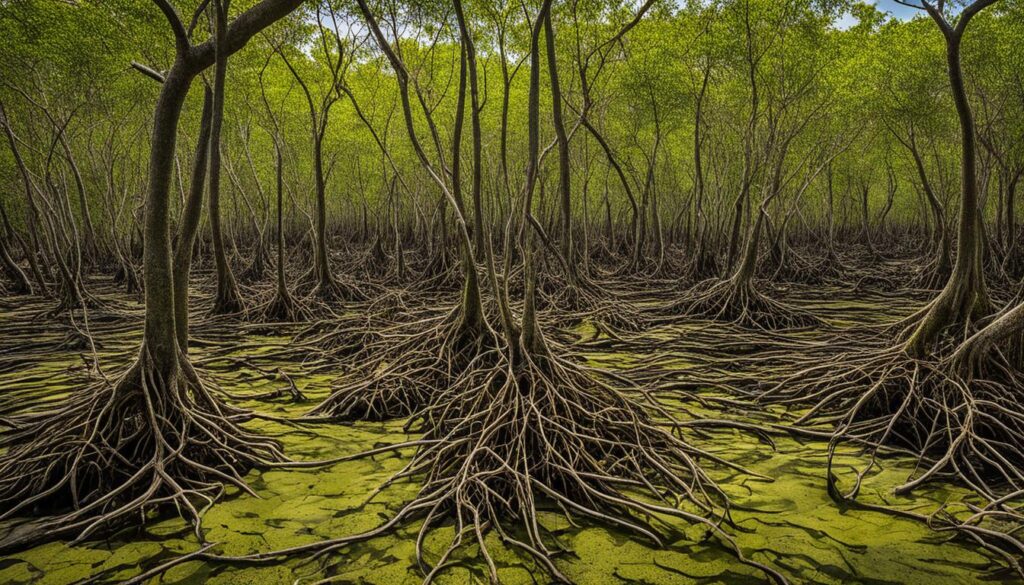
| Ecosystem Function | Significance |
|---|---|
| Nutrient storage and recycling | Ensures the availability of essential nutrients for mangrove plants and supports other organisms in the food chain. |
| Runoff and flood prevention | Protects coastal areas from erosion and reduces the risk of flooding, safeguarding human communities and infrastructure. |
| Energy conversion | Sustains a diverse range of marine and terrestrial organisms by facilitating the transfer of solar energy to the food web. |
The productive nature of mangrove wetlands extends beyond their ecological functions. These ecosystems also store significant amounts of carbon in their sediments, making them important contributors to the global carbon cycle and climate regulation.
Biodiversity in Mangrove Forests
Despite having a relatively small number of tree species, mangrove forests support a high level of biodiversity. These unique ecosystems provide habitats for a wide variety of species, contributing to the overall biodiversity of the area.
Mangrove forests are particularly important for supporting marine megafauna, with up to 174 species found in these habitats. The intricate root systems and dense foliage of mangroves create a sheltered environment that attracts fish, invertebrates, and other organisms seeking food and protection.
This diverse community of species plays a vital role in the ecological balance of mangrove ecosystems. From filter-feeding organisms that help maintain water quality to predators that keep populations in check, every species has its place.
Furthermore, the mangrove tree community itself contributes to the overall biodiversity. Different mangrove species have distinct adaptations and growth patterns, creating a mosaic of habitats within the mangrove forest. This variation in structure and species composition enhances the complexity and richness of the ecosystem.
Mangrove forests are not only important for their ecological value but also for their socio-economic significance. They provide resources and livelihoods for coastal communities, including fisheries, timber, and non-timber forest products.
The unique combination of biodiversity and ecosystem services provided by mangrove forests underscores the need for their conservation and sustainable management.
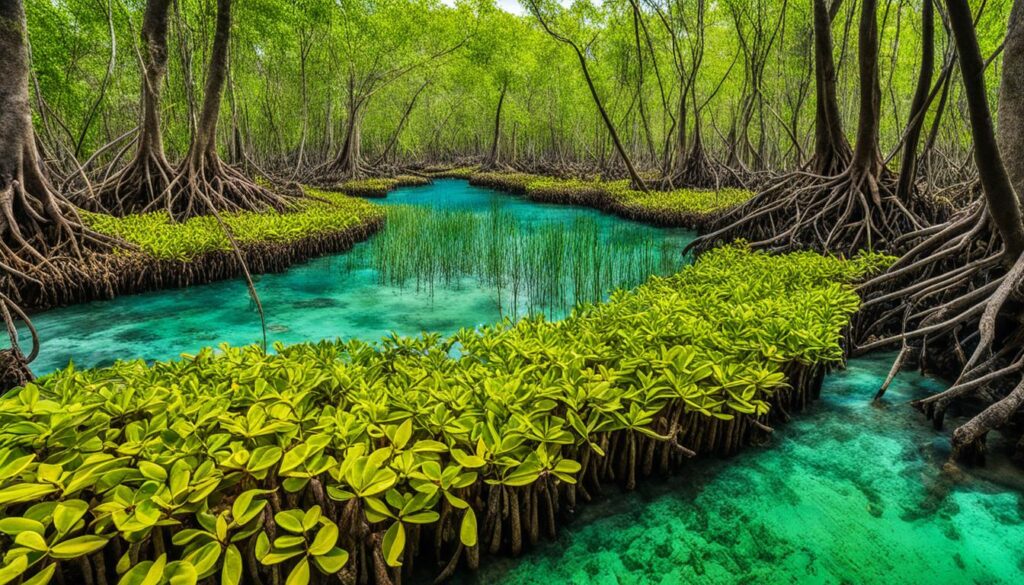
The Richness of Mangrove Biodiversity
Mangrove forests support a wide range of species, including:
- Shrimp and fish species
- Crabs and other crustaceans
- Mollusks, such as snails and clams
- Water birds and wading birds
- Reptiles, such as turtles and snakes
- Mammals, including dolphins and otters
The Role of Marine Megafauna in Mangrove Ecosystems
Marine megafauna, such as whales, sea turtles, and manatees, play a crucial role in maintaining the balance of mangrove ecosystems. They contribute to nutrient cycling through their movements and waste, enhance seed dispersal, and regulate prey populations.
| Marine Megafauna in Mangrove Forests | Role in the Ecosystem |
|---|---|
| Sea turtles | Contribute to nutrient cycling through their feeding habits and help maintain seagrass beds, which are vital for coastal stability. |
| Dolphins | Regulate prey populations and enhance the overall health of the ecosystem. |
| Manatees | Consume seagrass, promoting growth and maintaining the balance of coastal habitats. |
The presence of marine megafauna in mangrove forests demonstrates the interconnectedness of different species and the importance of maintaining biodiversity for the long-term health of these ecosystems.
Adaptations of Mangrove Plants
Mangrove plants have developed unique physiological adaptations to thrive in the challenging intertidal environment, characterized by low oxygen levels and high salinity. These adaptations enable them to withstand frequent tidal flooding and establish themselves in areas where other plant species may struggle to survive.
One of the key adaptations of mangrove plants is their ability to cope with low oxygen levels in waterlogged soils. They possess specialized root structures called pneumatophores that emerge from the ground and help facilitate gas exchange. These pneumatophores function like snorkels, allowing the plant to uptake oxygen from the air and transfer it to the submerged roots, ensuring their survival.
Another crucial adaptation of mangrove plants is their tolerance to high salinity. The roots of mangroves contain salt glands that filter out excess salt absorbed from the surrounding environment. This adaptation prevents salt buildup, which can be detrimental to most other plant species. By excreting the salt through their leaves, mangroves maintain a suitable balance of salt concentration within their tissues.
The ability to thrive in high salinity conditions is further facilitated by the unique leaf structures of mangrove plants. These leaves often have a waxy coating or specialized pores called stomata that control the entry and exit of gases and regulate water loss, reducing the impact of evaporation in saline environments.
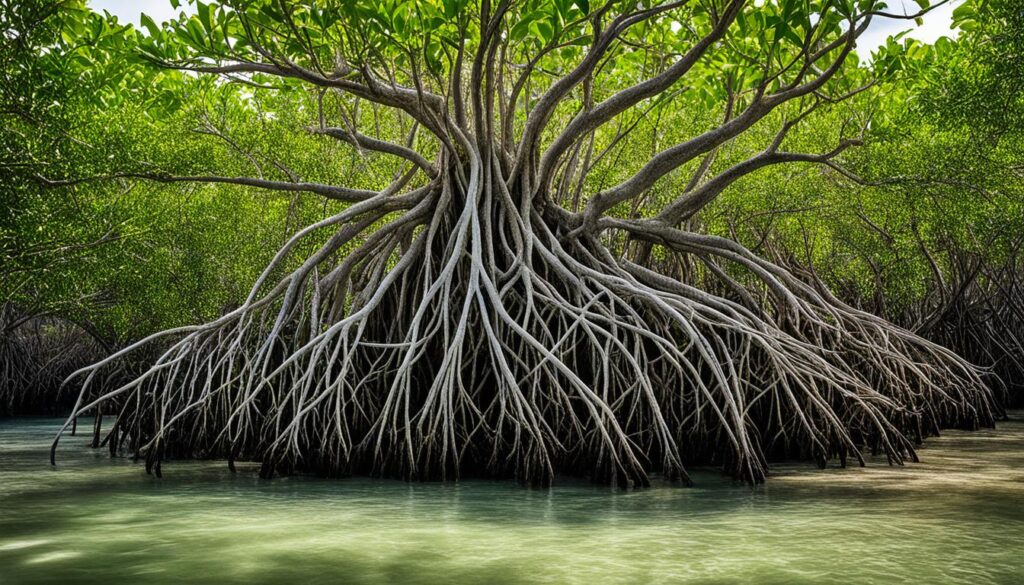
“Mangrove plants have evolved remarkable physiological adaptations to survive in the intertidal environment, where low oxygen levels and high salinity present significant challenges. These adaptations, such as pneumatophores and salt glands, enable mangrove plants to thrive in an otherwise inhospitable habitat.”
Due to these incredible adaptations, mangrove forests are able to establish distinct zones within their habitat based on their tolerance to varying oxygen levels, salinity, and moisture. This creates a diverse ecosystem that supports a wide range of plants, animals, and microorganisms.
Mangrove Adaptations in Various Zones
| Zone | Physiological Adaptations |
|---|---|
| Salt-tolerant Zone | – Thick succulent leaves to minimize water loss – Salt-filtering roots to remove excess salt – Ability to store high levels of salt in tissues |
| Transition Zone | – Pneumatophores for gas exchange in waterlogged soils – Tolerance to fluctuating salinity levels |
| Freshwater Zone | – Enhanced water uptake mechanisms – Ability to tolerate lower salinity levels |
These specialized adaptations of mangrove plants not only allow them to endure harsh environmental conditions but also provide a foundation for the diverse ecological communities that rely on mangrove forests for sustenance and shelter. The adaptations of mangrove plants are critical to the overall resilience and ecological importance of these unique coastal ecosystems.
Ecosystem Services Provided by Mangrove Forests
Mangrove forests play a crucial role in providing valuable ecosystem services that are essential for the well-being of both the mangrove ecosystem and coastal communities. These services include the prevention of runoff and floods, nutrient storage and recycling, and the protection of coastal areas from erosion. Let’s explore each of these services in detail:
1. Runoff Prevention
One of the key services provided by mangrove forests is the prevention of runoff. The dense root systems of mangroves act as natural barriers, reducing the velocity of water flow and capturing sediments and pollutants. This helps to filter and purify the water before it reaches coastal areas, preventing soil erosion and maintaining water quality.
2. Nutrient Storage and Recycling
Mangrove forests efficiently store and recycle nutrients, making them available to both the mangrove ecosystem and adjacent marine environments. The intricate root systems and leaf litter of mangroves trap and store organic matter, which promotes the growth of bacteria and fungi that break down the detritus and release nutrients. These nutrients are then utilized by the mangroves themselves, as well as by various organisms in the surrounding ecosystem.
3. Protection against Erosion
Mangrove forests act as a natural buffer against erosion caused by waves, tides, and storms. The extensive root systems of mangroves stabilize the soil and bind sediments, reducing coastal erosion and helping to maintain the integrity of coastal areas. This protection is particularly vital for low-lying coastal regions and islands, shielding them from the impacts of extreme weather events.
4. Carbon Storage and Sequestration
Mangrove forests are highly effective carbon sinks, storing and sequestering vast amounts of carbon dioxide from the atmosphere. The fallen leaves, branches, and other organic matter in mangrove sediments accumulate over time and become buried. Due to the low oxygen levels in these sediments, the carbon remains locked away for extended periods, helping to mitigate climate change by reducing greenhouse gas emissions.
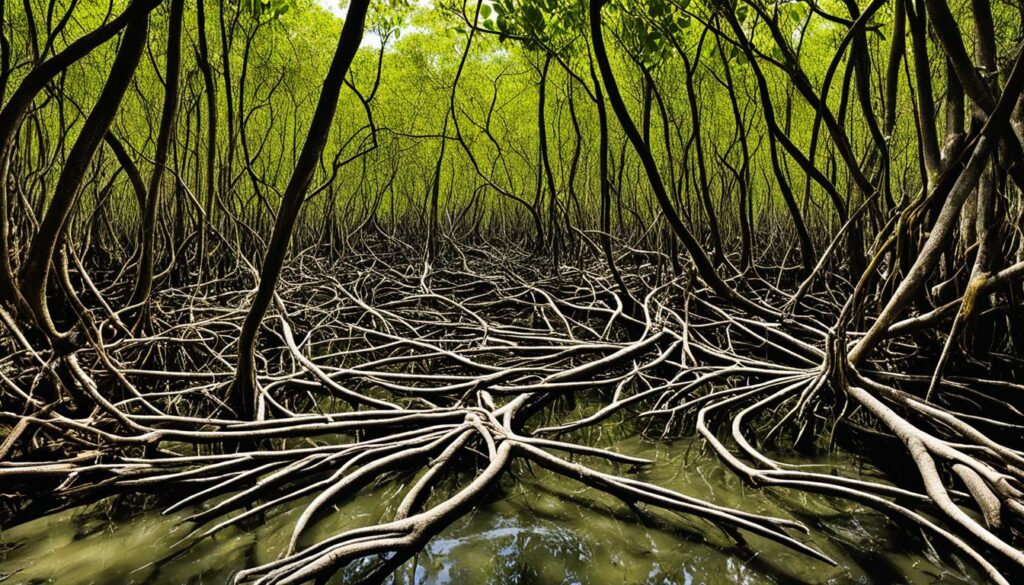
| Ecosystem Services | Significance |
|---|---|
| Runoff Prevention | Reduces soil erosion and maintains water quality. |
| Nutrient Storage and Recycling | Ensures the availability of nutrients for the mangrove ecosystem and adjacent marine environments. |
| Protection against Erosion | Acts as a natural buffer, stabilizing coastal areas and reducing erosion. |
| Carbon Storage and Sequestration | Helps mitigate climate change by storing and sequestering large amounts of carbon dioxide. |
Mangrove forests provide a wide range of ecosystem services that are vital for the health and resilience of coastal ecosystems. These services not only benefit the mangrove ecosystem itself but also contribute to the well-being of coastal communities by protecting them from floods, maintaining water quality, and mitigating climate change.
Global Distribution of Mangrove Forests
Mangrove forests are widely distributed across the globe, with a presence in 118 countries and territories. These unique ecosystems thrive primarily in tropical and subtropical regions, where the intertidal zone offers the ideal conditions for their growth. Out of all the mangrove forests worldwide, approximately 75% are concentrated in just 15 countries.
Asia houses the largest share of mangroves, with countries like Indonesia, Bangladesh, and Myanmar hosting extensive mangrove forest areas. Latin America and the Caribbean are also rich in mangrove biodiversity, with countries such as Brazil, Mexico, and Colombia playing a significant role in their conservation. In Africa, countries like Nigeria, Tanzania, and Madagascar harbor important mangrove ecosystems. Oceania, encompassing Australia, Papua New Guinea, and Fiji, boasts diverse mangrove forests as well. Northern America, particularly the southern states of the United States, contributes to the global distribution of mangroves.
The total area covered by mangrove forests globally is estimated to be around 137,600 square kilometers. These remarkable ecosystems provide invaluable services to both coastal communities and the environment. Let’s explore further how mangrove forests contribute to our coastal habitats, wetlands, biodiversity, and more.
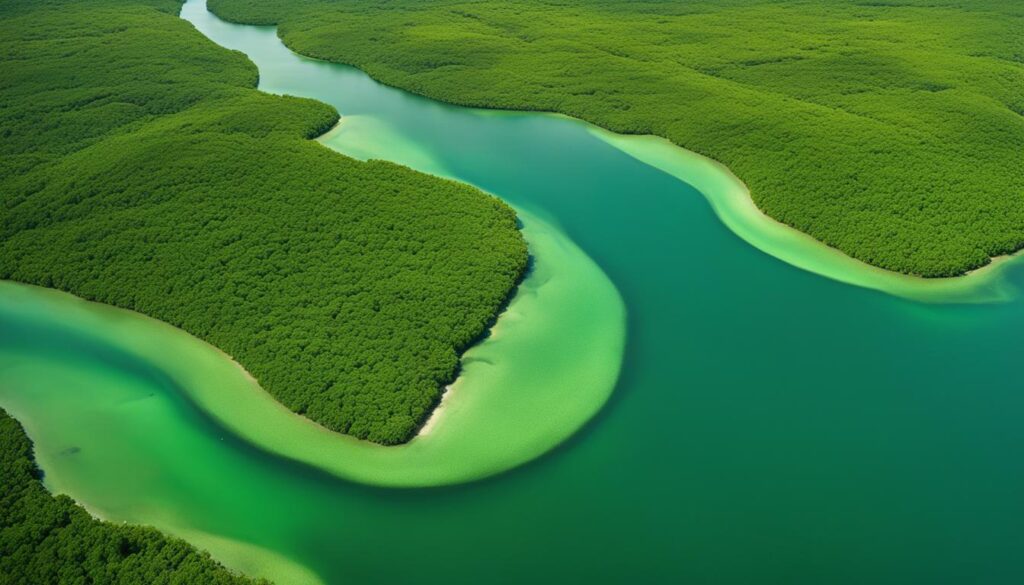
Top 15 Countries with the Highest Mangrove Forest Area
| Country | Mangrove Forest Area (square kilometers) |
|---|---|
| Indonesia | 24,200 |
| Australia | 12,021 |
| Brazil | 10,625 |
| Mexico | 6,368 |
| Bangladesh | 5,786 |
| Nigeria | 3,568 |
| Myanmar | 3,365 |
| Thailand | 2,814 |
| Ecuador | 2,269 |
| Venezuela | 1,530 |
| Colombia | 1,536 |
| Malaysia | 1,482 |
| Philippines | 1,451 |
| Papua New Guinea | 1,448 |
| Cuba | 1,398 |
The Sundarbans: The Largest Mangrove Forest
The Sundarbans, located in the delta of the Brahmaputra and Meghna rivers in the Bay of Bengal, is the largest mangrove forest in the world. Covering approximately 10,000 km2, with 6,000 km2 in Bangladesh, the Sundarbans is a unique ecosystem intersected by tidal waterways, mudflats, and small islands. It is home to a diverse range of plant and animal species, including the iconic Bengal tiger.
Unparalleled Beauty and Biodiversity
The Sundarbans, renowned for its unparalleled beauty and biodiversity, is a UNESCO World Heritage Site. It is a living testament to the incredible adaptability of nature in the face of challenging environments. The Sundarbans’ intricate network of branches, roots, and water channels creates an enchanting landscape that captivates visitors from around the world.
Home to numerous rare and endangered species, the Sundarbans provides crucial habitat for a diverse range of flora and fauna. From majestic Royal Bengal tigers to playful Irrawaddy dolphins, this mangrove forest supports a delicate web of life that is both elusive and mesmerizing.
The Royal Bengal Tiger: A Majestic Icon
The Sundarbans is synonymous with the Royal Bengal tiger, a majestic and elusive predator that has become a symbol of the forest. The mangrove habitat of the Sundarbans provides the perfect hunting grounds for these iconic big cats. Their stealth and power are a testament to their adaptation to the unique challenges of living in an intertidal zone.
“The Royal Bengal tiger is a true masterpiece of evolution. Its ability to swim, hunt, and thrive in the dynamic landscape of the Sundarbans is awe-inspiring.” – Dr. Zoë Williams, Wildlife Biologist
Conservation Efforts and Challenges
Despite its ecological importance, the Sundarbans faces numerous challenges, including human encroachment, climate change, and biodiversity loss. Efforts are underway to protect and conserve this invaluable ecosystem.
The governments of India and Bangladesh, along with various conservation organizations, are implementing strategies to mitigate human-wildlife conflicts, establish protected areas, and promote sustainable livelihoods for local communities. These initiatives aim to safeguard the Sundarbans for future generations while ensuring the well-being of both wildlife and people.
The Sundarbans: A Natural Wonder to Preserve
The Sundarbans stands as a testament to the resilience and beauty of mangrove forests. Its unique ecological features and rich biodiversity make it an invaluable treasure that must be protected. By recognizing the significance and fragility of this ecosystem, we can work together to ensure the survival of the Sundarbans and all the wonders it holds.
Conservation of Mangrove Forests
Given the crucial role of mangrove forests in supporting coastal ecosystems and providing essential ecosystem services, extensive efforts are underway to conserve and protect these invaluable habitats. National biodiversity action plans and conservation programs are being implemented to safeguard and restore mangrove ecosystems, ensuring their long-term viability and the sustainable use of coastal resources.
Mangrove conservation programs focus on preserving the biodiversity and ecological integrity of these forests. By protecting and restoring mangrove habitats, these initiatives contribute to the preservation of various species and their habitats, promoting the overall balance of coastal ecosystems. The conservation of mangroves not only safeguards the diverse plant and animal life they harbor but also facilitates the regeneration of coastal fisheries and the overall health of adjacent marine environments.
Protecting Biodiversity and Ecosystem Services
One of the primary objectives of mangrove conservation is the preservation of biodiversity. Mangrove forests provide critical habitats for a wide range of plant and animal species, including migratory birds, reptiles, and numerous marine organisms. By protecting these habitats, conservation programs help ensure the survival of these species and promote the overall resilience and stability of coastal ecosystems.
In addition to preserving biodiversity, mangrove conservation programs also aim to safeguard the vital ecosystem services provided by these forests. Mangroves serve as natural buffers against erosion and storm surges, mitigating the impact of extreme weather events on coastal communities. They act as carbon sinks, effectively storing and sequestering carbon dioxide, thus contributing to climate change mitigation. Furthermore, mangroves improve water quality by filtering pollutants and trapping sediment, helping to maintain the health and productivity of marine ecosystems.
The Role of Biodiversity Action Plans
Biodiversity action plans play a significant role in guiding mangrove conservation efforts. These plans outline comprehensive strategies and measures to protect and restore mangrove ecosystems, incorporating scientific research, stakeholder engagement, and sustainable management practices. They address key conservation challenges, such as habitat degradation, unsustainable resource extraction, and human activities that contribute to mangrove loss.
“Mangrove conservation programs are essential for preserving the remarkable biodiversity and ecosystem services provided by these invaluable forests. By protecting and restoring mangrove habitats, we can secure the future of these critical coastal ecosystems and promote sustainable development.”
Moving Towards Sustainable Management
Conservation programs alone are not enough to ensure the long-term survival of mangrove forests. Sustainable management practices are equally important in maintaining the health and resilience of these ecosystems. This involves adopting approaches that balance resource utilization with the preservation of ecological integrity, integrating the needs of local communities, and promoting equitable and responsible utilization of coastal resources.
Mangrove conservation and sustainable management efforts require collaboration and cooperation among various stakeholders, including governments, local communities, non-governmental organizations, and research institutions. By working together, we can ensure the ongoing protection and restoration of mangroves, safeguarding their extraordinary biodiversity and vital ecosystem services.
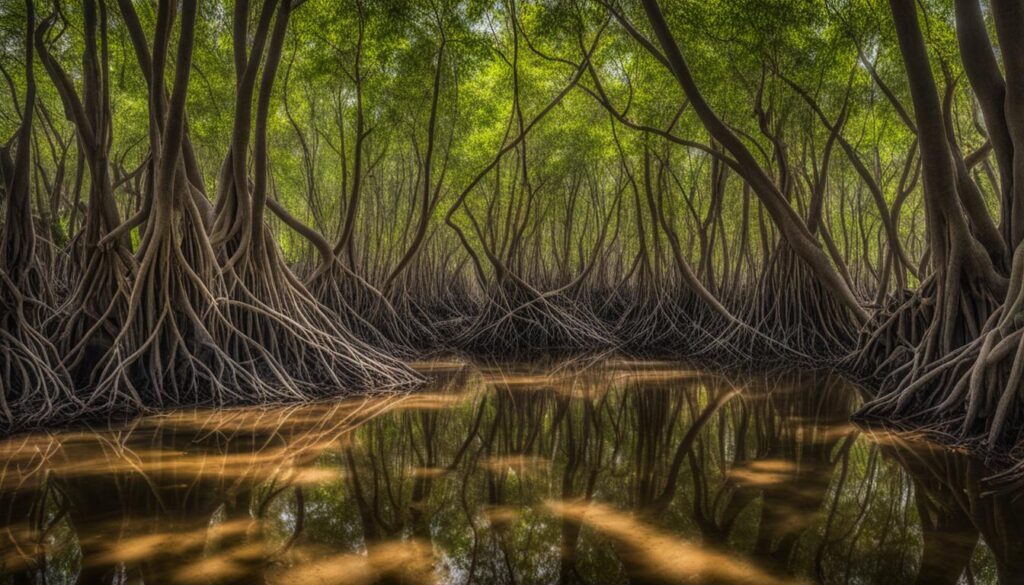
Image: Mangrove trees in a tropical coastal environment. Mangrove forests play a crucial role in supporting biodiversity and providing vital ecosystem services.
Threats to Mangrove Forests
Mangrove forests face significant threats that endanger their existence and the important ecological functions they provide. These threats include the loss of mangroves due to deforestation, conversion of land for shrimp farming, pollution from coastal development, and the impacts of climate change.
Mangrove Loss and Deforestation
Mangrove loss resulting from deforestation is a major concern for the conservation of these valuable ecosystems. Mangroves are often cleared to make way for urban development, agriculture, aquaculture, and infrastructure projects. This clearing disrupts the delicate balance of coastal ecosystems and depletes the natural habitat of countless species.
Conversion for Shrimp Farming
Shrimp farming, particularly in Southeast Asia and Latin America, has contributed to the destruction of mangrove forests. Large areas of mangroves are often cleared to create shrimp ponds, resulting in the loss of vital habitat and disrupting the natural hydrological systems. The intensified aquaculture practices associated with shrimp farming also cause pollution and nutrient imbalances, further impacting the health of the mangroves and surrounding waters.
Pollution from Coastal Development
The rapid coastal development occurring in many regions poses a significant threat to mangrove ecosystems. Urbanization, industrialization, and infrastructure projects result in increased pollution from effluents, oil spills, and other chemical discharges. This pollution negatively affects water quality, leading to the degradation of mangrove habitats and the organisms that rely on them.
Climate Change Impacts
Climate change poses a significant threat to mangrove forests, primarily through sea-level rise, increased frequency and intensity of storms, and changes in rainfall patterns. Rising sea levels flood and erode mangrove areas, disrupting their growth and survival. Extreme weather events, such as hurricanes and cyclones, can cause extensive damage to mangroves, further exacerbating their vulnerability. The shifting climate also disrupts the delicate balance of these ecosystems, affecting the flora and fauna that depend on them.
Mangrove loss, deforestation, shrimp farming, and pollution are significant threats that need to be urgently addressed to safeguard these valuable coastal ecosystems. The conservation and restoration of mangroves are crucial for preserving biodiversity, mitigating climate change, and ensuring the sustainable use of coastal resources.
Importance of Mangrove Restoration
Mangrove restoration plays a crucial role in the recovery and conservation of these valuable ecosystems. The restoration of mangrove forests not only helps mitigate the effects of climate change but also enhances coastal resilience, reducing erosion and providing a range of benefits to both the environment and local communities.
Restored mangrove forests act as natural barriers, protecting coastlines from the destructive forces of waves, storms, and tidal surges. The dense root systems of mangroves trap sediments and create a natural buffer against erosion, helping to stabilize shorelines and prevent further land loss. This sedimentation process contributes to the formation of new land, contributing to the growth of coastal areas.
Furthermore, mangroves are excellent carbon sinks, absorbing atmospheric carbon dioxide and storing it in their biomass and sediments. Restored mangrove forests play a critical role in carbon sequestration, helping to mitigate climate change by reducing greenhouse gas emissions and increasing carbon storage.
Restored mangrove ecosystems also provide essential habitats for a wide range of marine organisms. The intricate root systems and underwater props of mangroves create a complex network of habitats, offering shelter, food, and breeding grounds for various species. This biodiversity supports the overall health of the coastal ecosystem and fosters resilience in the face of environmental challenges.
The process of mangrove restoration involves planting mangrove seedlings in areas where they have been depleted or destroyed, providing suitable conditions for their growth, and managing the restored areas to ensure their long-term success. Proper planning, monitoring, and community involvement are essential for sustainable mangrove restoration efforts.
Successful Mangrove Restoration Projects
“The restoration of degraded mangrove areas is a powerful tool in preserving these unique ecosystems and ensuring their vital role in coastal resilience.” – Dr. Lisa Thompson, Marine Conservation Society
| Country | Project | Outcome |
|---|---|---|
| Indonesia | East Kalimantan Mangrove Restoration Project | Rehabilitated 1000 hectares of degraded mangrove forests, enhancing local biodiversity and coastal protection |
| Philippines | Malasimbo Mangrove Reforestation | Restored mangrove forests along the coast, improving water quality and providing sustainable livelihoods for local communities |
| Brazil | Mangue Vivo Program | Implemented extensive mangrove restoration initiatives, supporting the recovery of coastal ecosystems and mitigating climate change |
| Mexico | Yucatan Peninsula Mangrove Restoration | Promoted the restoration of mangrove forests, protecting coastal areas from storms and preserving critical habitats for marine life |
These successful restoration projects highlight the positive impact of mangrove restoration on coastal resilience and environmental conservation. By restoring and preserving mangrove ecosystems, we can protect our coastlines, combat climate change, and sustain the biodiversity that relies on these valuable habitats.
The Future of Mangrove Forests
The future of mangrove forests depends on our collective efforts in conservation and sustainable management. It is crucial to address the root causes of mangrove loss, such as deforestation and pollution, and implement restoration and protection initiatives. By recognizing the ecological and socio-economic value of mangroves, we can ensure the preservation of these critical coastal ecosystems for future generations.
Mangrove forests are under threat from various human activities and environmental challenges. Deforestation for agriculture, aquaculture, and urban development, as well as pollution from industrial and domestic sources, pose significant risks to these fragile ecosystems. Climate change-induced sea-level rise and changes in rainfall patterns further exacerbate the vulnerability of mangroves.
Conservation efforts play a vital role in safeguarding the future of mangroves. Governments, non-governmental organizations, and local communities are working together to develop and implement biodiversity action plans, protected area networks, and sustainable management strategies. These initiatives aim to preserve the unique biodiversity, carbon sequestration capacity, and coastal protection provided by mangrove forests.
Restoration programs are also crucial for the future of mangroves. By planting new mangrove seedlings and promoting the natural recruitment of mangrove trees, we can enhance the resilience and recovery of degraded mangrove habitats. These restoration efforts not only contribute to the conservation of biodiversity but also improve the livelihoods of local communities by providing sustainable sources of income and ecosystem services.
Quotes:
“The future of mangroves relies on our commitment to conservation and sustainable management. These unique coastal ecosystems are essential for biodiversity, carbon storage, and coastal protection.” – Dr. Maria Rodriguez, Marine Biologist
Table: Conservation Organizations
| Organization | Mission |
|---|---|
| World Wildlife Fund (WWF) | Protecting and restoring mangrove ecosystems through conservation projects and advocacy. |
| The Mangrove Action Project | Empowering local communities to protect and restore mangrove forests through education and capacity building initiatives. |
| Mangrove Foundation | Funding research, restoration programs, and conservation projects focused on mangrove ecosystems. |
The collaborative efforts of conservation organizations, research institutions, and local communities are vital for the successful management and protection of mangrove forests. By investing in sustainable management practices, raising awareness, and supporting conservation initiatives, we can secure a brighter future for mangrove ecosystems.
Conclusion
Mangrove forests are essential components of coastal ecosystems, providing a wide range of ecosystem services and supporting biodiversity. These unique forests play a crucial role in stabilizing coastlines, storing carbon, and protecting coastal communities from natural disasters. However, they are facing numerous threats, including deforestation, pollution, and climate change.
In order to ensure the continued existence of mangrove forests, conservation and sustainable management practices are imperative. Recognizing the importance of mangroves and taking proactive measures to protect and restore them is crucial for the future of these remarkable ecosystems and the well-being of both nature and humanity.
Conservation efforts should focus on addressing the root causes of mangrove loss, such as deforestation and pollution, while promoting restoration and protection initiatives. The future of mangroves relies on the collective efforts of individuals, communities, and governments to recognize their ecological and socio-economic value and work together towards their preservation.
By prioritizing the conservation and sustainable management of mangrove forests, we can ensure that future generations will continue to benefit from the importance of these ecosystems in maintaining coastal resilience, supporting biodiversity, and contributing to the overall health of our planet.



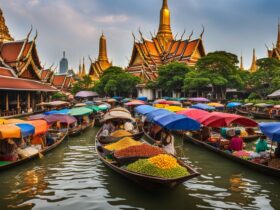

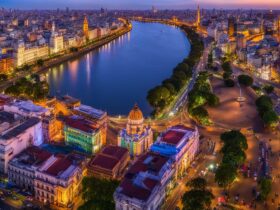
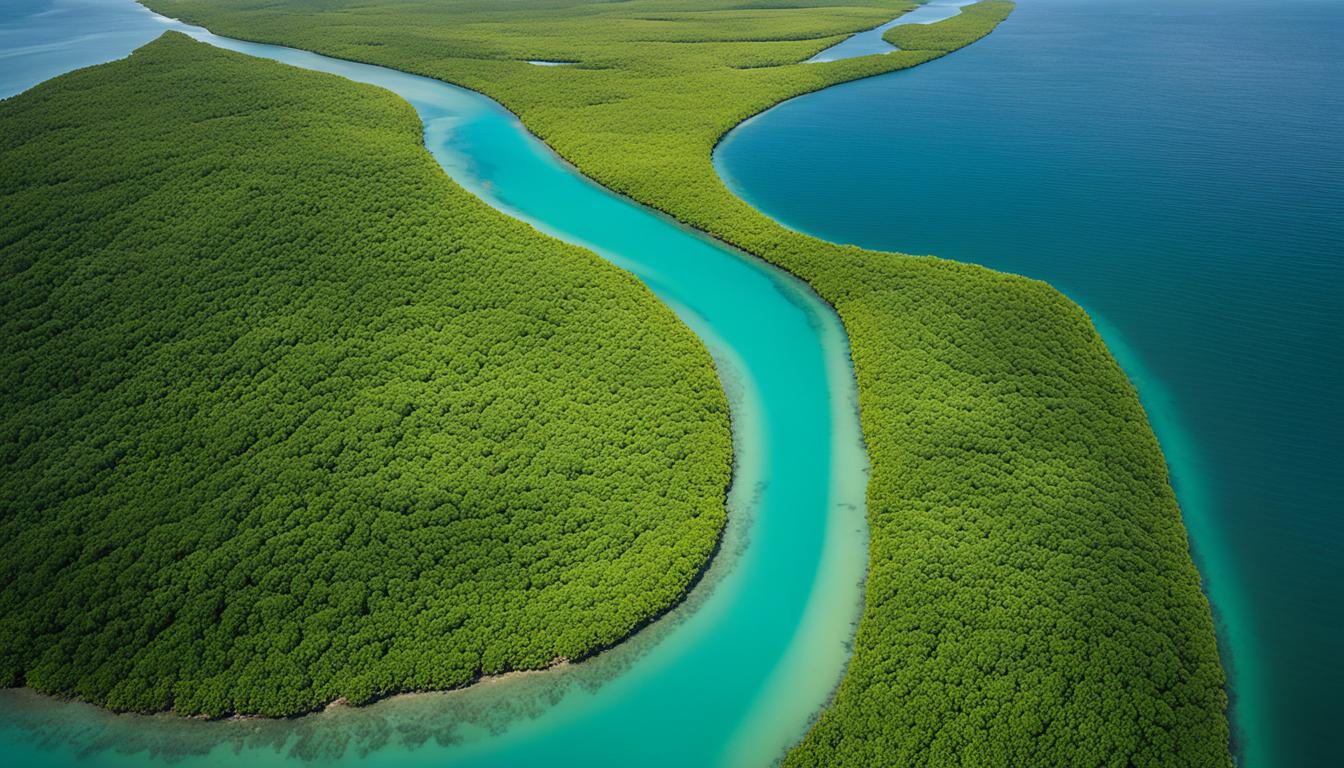
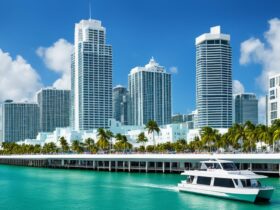


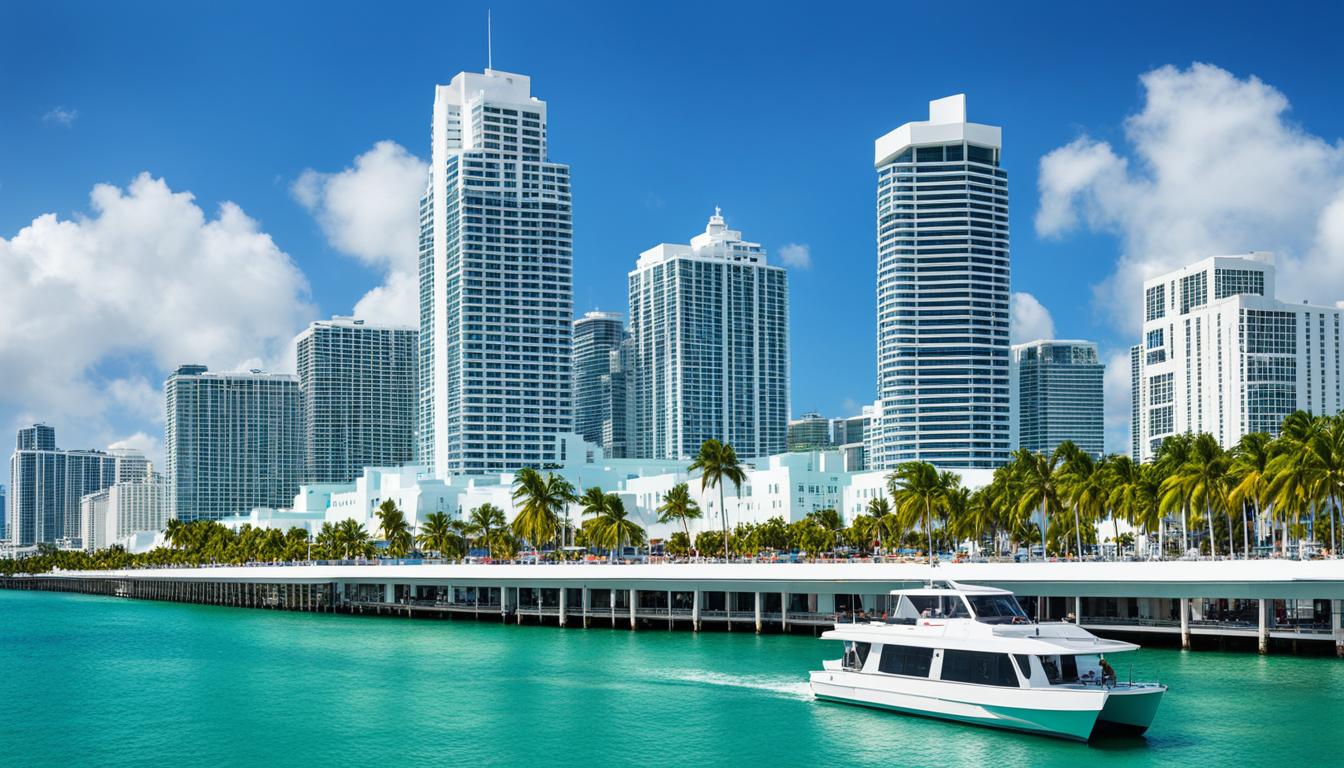


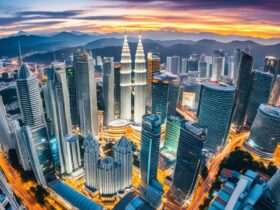





Leave a Reply
View Comments